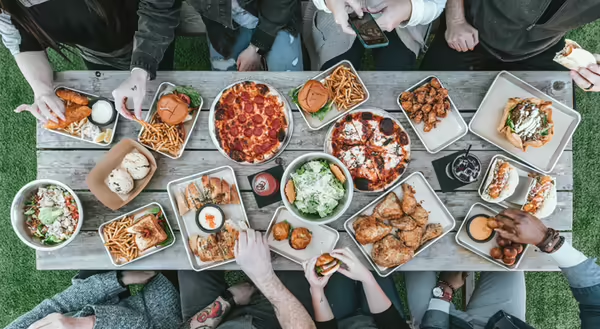
Gluten-free, low sugar, no fat — doesn’t that sound like a yummy Thanksgiving dinner? We could be describing a trend in modern dieting; however, what we are talking about is the first Thanksgiving.
When coloring hand-traced turkeys and making paper bag vests in elementary school, we learned that the Pilgrims and Native Americans gathered for a feast when their harvest was complete. We pictured the long tables laden with foods familiar to us — turkey, potatoes, pumpkin pie.
In reality, their feast was quite different.
A glance into the past
There was no turkey, no mashed potatoes, no stuffing. The Pilgrims had long since used up their supply of flour, so their feast was devoid of all bread products and hence gluten-free. As for the pumpkin pie, with no dairy, eggs, or flour for the crust, they sufficed with boiled or dried pumpkin, a delicacy in the native world.
Fish and wild game were plentiful in the region, and records indicate that the Wampanoag brought 5 deer to the feast. Waterfowl were also a big part of both the Pilgrim and Native people’s diets, and there were surely a great many ducks and geese roasted over the fire and offered as a savory part of the feast.
Sugar was a foreign substance to the Wampanoag people; however, they occasionally found a store of honey left by bees and used it to sweeten their staple corn soup, or nasaump, as they called it. They could have also had a variety of wild grapes or berries dried from the spring season.
Our modern-day feast
The classic American menu: turkey, stuffing and all the trimmings will quickly add up to a whopping 2123 calories with 70.8 grams of fat and 3784 milligrams of sodium or more; some accounts list 4000 calories! How does that compare with the original feast? If we assume our early ancestors ate 3.5-ounce servings of meat and ½ cup servings of fruits and vegetables, we can calculate their feast at just under 700 calories with less than 10 grams of fat and very little sodium.
In essence, we have taken a fairly healthy meal and turned it into a nutrition nightmare. It would benefit us to be more like the Wampanoag and the Pilgrims.
Another thing they did was to play games after the feast. Records indicate that they stayed together for 3 days, feasting and enjoying friendly competitions with running races and other games of the times. I am not saying that we should not enjoy our traditional holiday. I certainly plan to gather with family and share those dishes special to us. But I will try to convince my family to take a walk after dinner!
Happy Thanksgiving to all!
ABOUT THE AUTHOR: Mary Liz Wright is an Extension nutrition and wellness educator who believes that people who are well-fed tend to have healthier and more successful outcomes. She is a life-long resident of Edgar County who is passionate about empowering Illinois residents in the counties she serves to make good life choices through nutrition and wellness education. Wright feels that Extension education is especially vital to local residents with limited resources. She earned a bachelor's degree in theology from Loyola University of Chicago and a master's degree in family and consumer science from Eastern Illinois University. She is a member of the family and consumer science professional organizations, NEAFCS and IEAFCS.